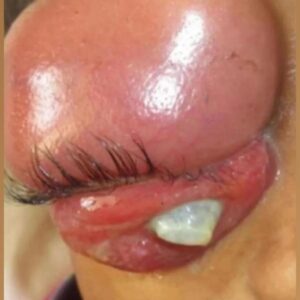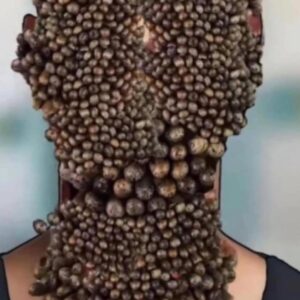Suffering. Itching. Itching. Expanding. gushing blood. Rashes. ulcers. Varicose veins can be identified in a variety of methods, none of which are favorable. There are situations when there is truly no choice except to remove the veins. However, most of the time, using natural therapies, you can get some relief.
Kathleen Boyle, DO, is a vascular surgeon who explains what works and what doesn’t, as well as when to start treating your illness rather than just monitoring it.

Having varicose veins removed is the only method to eliminate them. Vascular experts such as Dr. Boyle employ methods such as laser therapy (endovenous thermal ablation), ligation and stripping surgery, and injectable therapy (sclerotherapy) to either physically remove or seal the vein.
The good news is that these intrusive therapies aren’t always required.
Although there is no non-invasive way to eliminate varicose veins, there are numerous at-home treatments that can help you control your symptoms. We discussed the top five methods for enhancing circulation and minimizing pain with Dr. Boyle.
Compression stockings are likely the best at-home treatment for varicose veins.
Dr. Boyle says, “Compression stockings improve symptoms like aching, throbbing, and itching—especially if you wear them throughout the day.” This is because they prevent the veins from dilatation.
Compression socks were undoubtedly uncool for a while. However, the majority of producers of medical-grade compression pantyhose now provide stockings in adorable patterns and eye-catching hues. Additionally, sheer compression stockings in flesh tones similar to pantyhose are available.
The length of your legs where your varicose veins extend determines the type of compression garment you need. You can obtain stomach-covering clothing that is knee-high, thigh-high, or even legging-style. Dr. Boyle advises keeping an eye out for edema in your feet if you decide to wear compression tights.
Compression socks can be really beneficial, but according to Dr. Boyle, you won’t get the full effects of compression unless you purchase medical-grade stockings. Ask your provider for recommendations if you’re unsure.
A healthy diet is an excellent place to start if you’re looking to improve vein health. In particular, you should consume a lot of potassium, fiber, and flavonoids. Certain herbs may also be able to reduce symptoms.
It’s crucial to try to obtain the nutrients you require from food, not supplements, as with any eating plans.
Plant chemicals called flavonoids are responsible for the color of many meals. They appear to offer several health benefits, but the most encouraging finding for those with varicose veins is that they may help lower blood pressure.
Flavonoids are divided into four subtypes:
1. Anthocyanins.
2. Flavones.
3. Flavanols.
4. Isoflavones.
Rutin, also known as rutoside, is the most promising flavonoid for the treatment of symptoms associated with varicose veins. There are several different foods that contain this flavanol, such as amaranth leaves, buckwheat, hot peppers, capers, and green tea.
If there’s one thing about fiber you probably already know, it facilitates elimination. And for that reason, eating a high-fiber diet is advised for those who have varicose veins. When you have varicose veins, it’s crucial to keep your lower body from being overly stressed. Therefore, powerlifting might not be your sport. Bran might become your new best friend, too.
Many foods, such as whole grains, legumes, fruits, and vegetables, are good sources of fiber.
Some of the uncomfortable symptoms of varicose veins may be lessened by lowering blood pressure, which may be accomplished with a diet high in potassium.
Most likely, the simple banana is the first meal that comes to mind when you hear the phrase “potassium.” However, it shouldn’t be your sole option. Vegetables like spinach and carrots as well as fruits like grapefruit and cantaloupe accomplish the job and are lower in calories.
Just watch that you don’t go overboard. Overconsumption of potassium can lead to cardiac issues and muscular weakness.
Many plants have showed promise in the treatment of varicose vein problems, while further research is necessary. They are as follows:
1. Horse chestnut seed extract.
3. Centella Asiatica.
4. Grape seed extract.
While keeping your blood moving helps relieve symptoms and briefly improve the appearance of varicose veins, it cannot completely eradicate them.
And don’t worry, these advantages are not exclusive to marathon runners. Dr. Boyle states that her first recommendation to her patients is to go for a nighttime walk.
Dr. Boyle observes, “Your legs are down throughout the day and you probably aren’t moving around as much.” “Taking a stroll in the evening promotes healthy circulation throughout the body. Additionally, when you sleep at night, you’ll feel better.
Try activities like ankle or calf lifts that you can perform while sitting or lying down if walking and standing aren’t your thing.
Not everybody can elevate their legs. But if you can, Dr. Boyle recommends doing it.
“It’s kind of impractical, but if you can elevate your legs, you’ll notice that your symptoms will improve,” Dr. Boyle says.
If a legs up the wall pose isn’t in the cards for you, consider purchasing a leg elevation pillow. An adjustable bed is a (more expensive) option, too.
The goal is to get your legs up above your heart, so that gravity can help your veins push your blood in the right direction. But if that’s not possible, even elevating your legs slightly — like you do when using an ottoman, recliner or elevated leg rests on a wheelchair — can help reduce the pressure on your veins.
Congratulations if you’ve been searching for a reason to treat yourself! Although they won’t heal your varicose veins, massages can momentarily lessen discomfort and swelling. Dr. Boyle advises those who have had a phlebitis episode to consult with their healthcare physician prior to receiving a massage or self-massaging of their veins.
It’s vital to remember that some spas and massage therapists have policies prohibiting them from massaging varicose veins. Usually, they do it out of concern that they might loosen a clot, burst blood vessels, or harm your veins in some other way. It is your duty to disclose to your massage therapist any underlying medical concerns you may have, particularly if they affect your kidneys or heart, or if you are currently experiencing an illness of any kind. Informing them if you have a history of blood clots is equally crucial.
Even if a leg massage might not be on your spa day itinerary, it’s still a good idea. See your healthcare practitioner about being referred to a medical massage therapist if the massage therapist at your neighborhood spa or massage parlor is unwilling or unable to perform leg massages. These professionals collaborate closely with your healthcare team and customize their treatments to address your unique health issues.
Your massage therapist may utilize compression pumps and other equipment as part of a lymphatic drainage massage, which is frequently performed in hospital settings, if you have additional medical issues in addition to your varicose veins, such as lymphedema. Additionally, it’s typical for the massage therapist to instruct you on how to perform similar massages at home.
Therefore, even while you might not be able to get a leg massage anyplace, you also don’t need to be afraid of getting one. “We even advise patients who have experienced thrombophlebitis to massage those veins after a specific amount of time,” Dr. Boyle adds. “You have to loosen up and break up the really hard part.”
Spend enough time online, and you’re almost sure to come across some bizarre health advice. Fortunately, that strange suggestion is just that—weird—when it comes to varicose veins. Not harmful.
Generally speaking, Dr. Boyle is not concerned when patients attempt unproven home cures they come across online. You can try an unorthodox home remedy as long as what you’re doing isn’t making your condition worse. However, discontinue using it if it worsens the appearance of your veins or a wound, such as a venous leg ulcer.”
Although experimenting with some of the more bizarre cures—tomato poultices, anyone?—is harmless, Dr. Boyle does suggest avoiding any gadgets that you come across online.
She advises against spending a lot of money on anything that claims to be able to get rid of varicose or spider veins since she doesn’t think it can. Visiting a vein expert is the best way to get rid of bothersome varicose and spider veins.
Varicose veins never cause problems for some people. Some people use home remedies to receive all the relief they require. However, those treatments might not be sufficient for certain individuals.
How can you tell when it’s time to discuss treatment options with your provider?
If you have ever experienced any of the following, or are experiencing any of the following now, Dr. Boyle strongly suggests treatment:
1. An episode of phlebitis.
2. A venous leg ulcer.
4. Bleeding.
5. Symptoms (like pain, itching and tenderness) that interfere with your daily life.
Distress over your veins’ appearance. (Just keep in mind that the procedure might not be covered by insurance if you can’t prove that it’s medically necessary.)
To be honest, though, if you’ve read this far, you should definitely speak with a healthcare professional about your course of therapy. Understanding your health may help you detect your symptoms, and having a talk is not a commitment.
Dr. Boyle observes, “I believe that most people don’t even realize that their leg bothers them until we eliminate the veins.” “But afterward, they experience a lighter leg and increased energy.”


